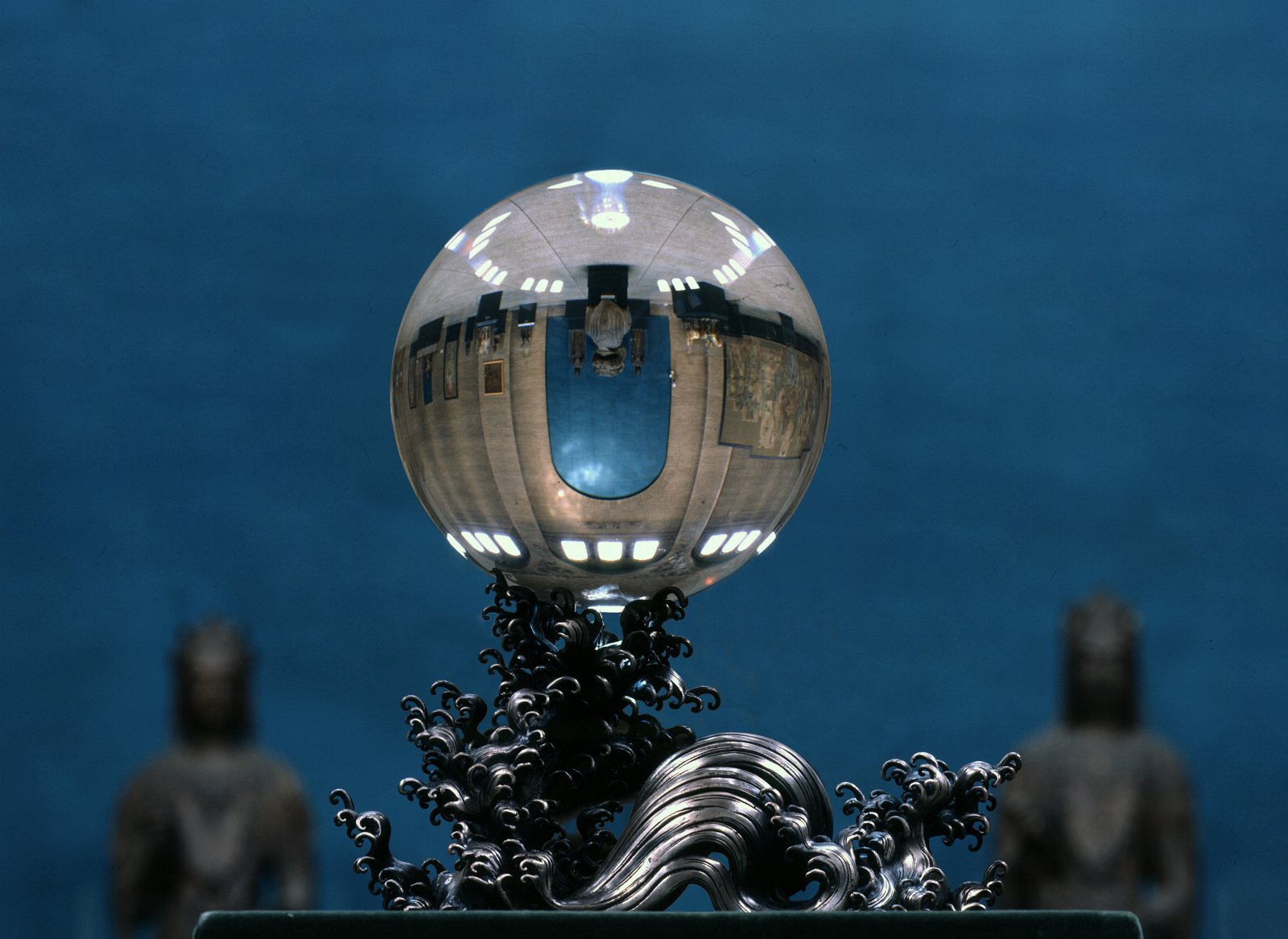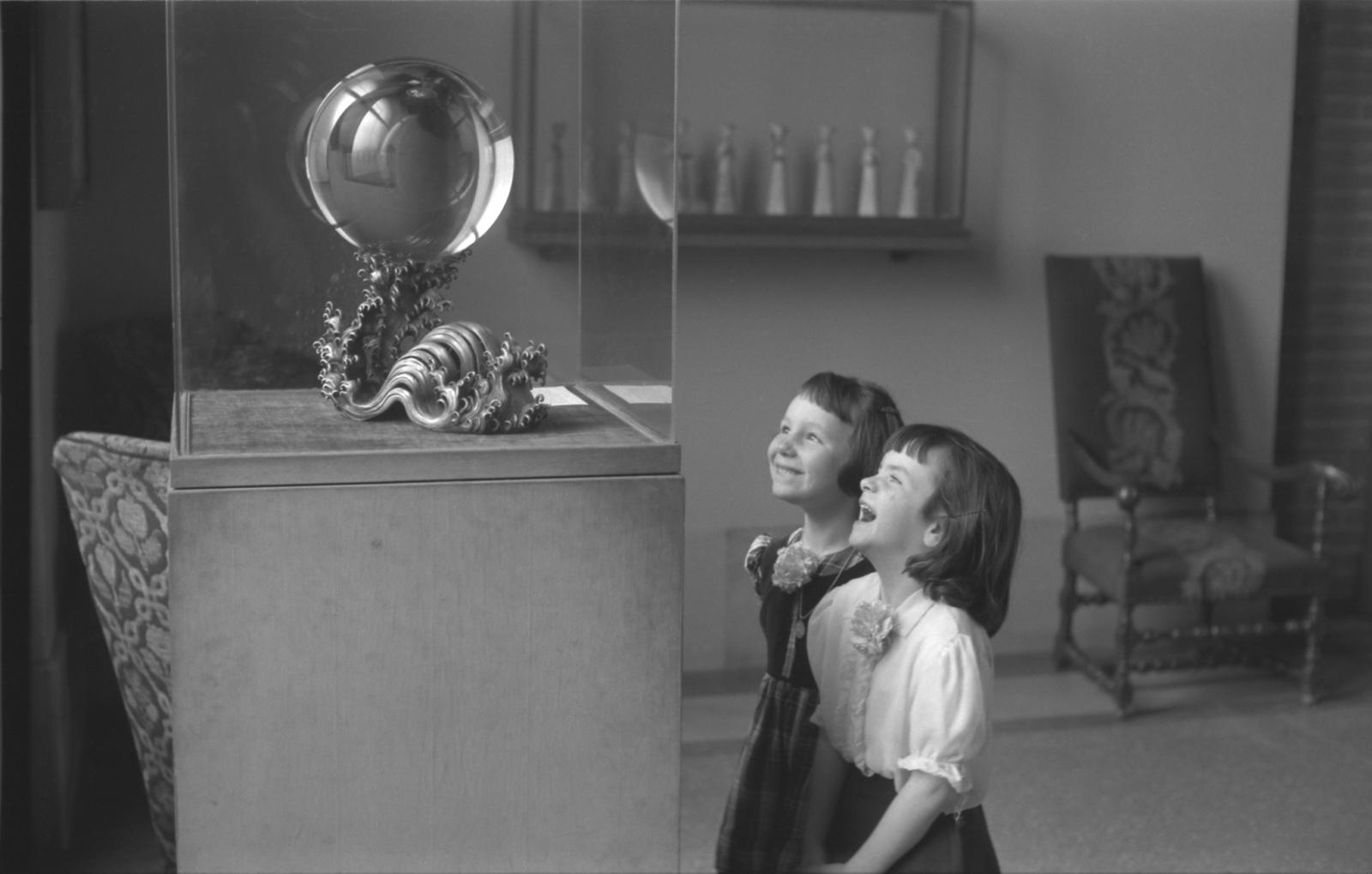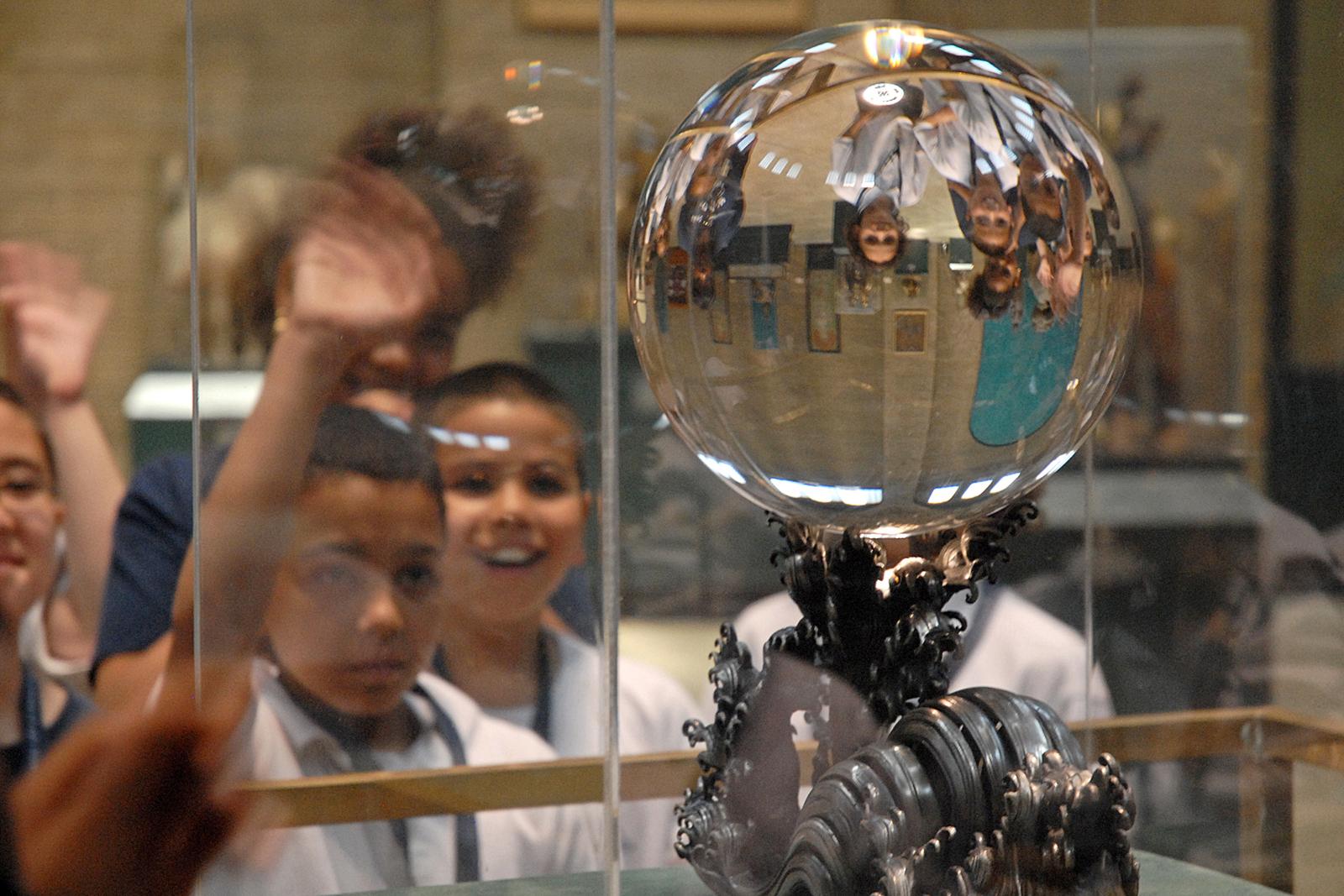
For almost 100 years—except for the three it went missing—one of the world’s largest crystal balls has occupied the Penn Museum’s Asia Galleries. Surrounded by Chinese art, the orb is a centerpiece with provenance that defies precise pinpointing, although Stephen Lang, the Lyon’s Keeper of Collections in the Asian section, has tried.
For Lang, the crystal ball became something of an obsession as he did “these deep dives” into the object’s provenance during the pandemic. “As a keeper, I’m trying to solve mysteries,” he says.
Reputedly, the 49-pound object had been in the possession of Dowager Empress Cixi, who died in Beijing’s Forbidden City in November 1908. The Wanamaker’s catalog of 1924 notes that after the Qing dynasty’s fall, the ball travelled through Asia before being purchased by the department store in Shanghai.
“It’s a good cover story,” Lang says. “It makes a certain amount of sense. In the public imagination, the dowager empress was somebody that Americans would have known because they had just witnessed, 10 years ago, the fall of this empire and she was this big historical figure,” he says, “known for having somewhat extravagant taste.”
But Lang had always been skeptical of the imperial story because two smaller nine-inch crystal balls, nicknamed “Emperor” and “Empress,” had been displayed by Wanamaker’s prior to the listing of the dowager empress crystal ball.
“Well, what do we call this?” Lang imagines the department store saying as they manufactured a back story. “We already used up Emperor and Empress, you got to come up with something else.”
At the time, ancient objects were also cheaper to import from China than modern ones, Lang says, so attributing an older age to the crystal ball would have been a cost-saving measure.
But it wasn’t until he reached out to Jeffrey Post, mineralogist and curator-in-charge of gems and minerals at the Smithsonian Institute that Lang began to piece together a probable alternative.
The Smithsonian had just completed provenance research on their own crystal ball and determined that the 12-inch, 106-pound object in their collection, currently recognized as the largest crystal ball in the world, came from a large quartz deposit in Burma and was later refined in Shanghai, where, Lang says, the Wanamaker’s department store had recently opened a branch. The acquisition dates of the two orbs are just three years apart.
“All these kinds of points started lining up,” Lang says, though he still hasn’t been able to find a direct link from the Penn Museum’s crystal ball to the one in the Smithsonian.
The crystal ball is a conundrum. On one level, “there’s nothing to know,” Lang says. The label text is brief. The object itself is simple: a large, clear ball of quartz, ancient, modern, and timeless. But it’s also, he says, “a rabbit hole that never ends.”
The crystal ball was originally purchased in 1927 for $50,000 (along with lapis, jade, and other items) by former board member Eldridge Reeves Johnson. He then donated the objects to the Penn Museum as the George Byron Gordon Memorial Collection in honor of the late Museum director, with whom Johnson had corresponded about the crystal ball prior to Gordon’s sudden death. At the time of their correspondence both men had agreed it was beautiful, but the asking price was too high.
In the late 1920s, the crystal ball went on display together with a Japanese silver stand in front of the Museum rotunda. At that point, the crystal ball “sort of becomes this thing that is iconic,” Lang says.
The crystal ball commands attention. It’s what school children gawp at.
That is, until it was stolen.
In October of 1988, during painting renovations, a security guard ignored a pinging alarm, thinking a worker had set it off, Lang says. The next morning the crystal ball was gone, along with a statue of Osiris. It looked as if there was also an attempted theft in the Greek and Roman galleries, Lang says, but nothing was taken except for Osiris and the crystal ball and stand.
Soon after, recounts Lang, a student, who had recently drawn the crystal ball as part of a class, was walking across the South Street Bridge and noticed the silver crystal ball stand propping a door open. He immediately recognized the distinctive stand.
Then, in 1991, when Museum volunteer Jess Canby decided to buy some new shoes, she headed into Center City. Discouraged at the dearth of available parking spots, Canby turned around and headed back to the Museum. On her way, she stopped in at an antique store on South Street, Lang says. There, she recognized the Museum’s statue of Osiris.
Canby returned to the Museum and alerted the registrar, who called the FBI. They recovered the statue and started asking questions, which led them to a character called “Al the Trash Picker,” Lang says.
Al the Trash Picker leads them to another person with a large garage, which he called a “mudroom,” Lang says. He didn’t know how the Museum objects had arrived in his mudroom other than that he had “a group of friends that would go around and trash pick and put stuff into this garage,” Lang says.
Lang says that at that point, the man with the garage said that, thinking the piece was a lawn ornament he gave the crystal ball to a friend, who was a witch. “He says he thought it was really ugly,” Lang says. “Who could see the crystal ball and think it was ugly?”
The FBI found the object in the witch’s bedroom, covered with a baseball cap, Lang says. “She had had it down on the coffee table, but the sun kept coming in and burning holes in her rug.”
And so, the crystal ball was recovered and reunited with the silver stand.
“When you track down something like that,” Robert K. “Bob” Wittman, the FBI special agent who worked on the case, wrote in his memoir, “you have this feeling of euphoria that I can only compare to how I felt when my kids were born.”
The Museum director was similarly elated, Lang says, telling a story about how the news was shared. It was Oct. 31, 1991, Lang says, and everyone was wearing Halloween costumes. “So, someone was dressed up as a cow, and somebody else had antlers on or something,” Lang says. “He was just thrilled that it was back.”
“At some point all of Philadelphia is kind of getting into this crystal ball mystery,” Lang says. “It’s sort of endlessly fascinating.”
Lang’s theory is that the thieves were not financially motivated and dumped the objects near the South Street Bridge rather than attempting to find a buyer for them. “They just kind of threw them in the trash,” he says.
Laura Hortz Stanton, director of collections at the Penn Museum, says that museums are constantly evaluating and improving practices. During the last few decades, “documentation, research, and security measures around the Penn Museum’s collections have undergone significant assessments and rigorous updates to meet fieldwide standards and ensure the collections are preserved for future generations,” she says.
Having survived the theft, the crystal ball, still wrapped in mystery, continues to be a favorite of Penn Museum visitors.









